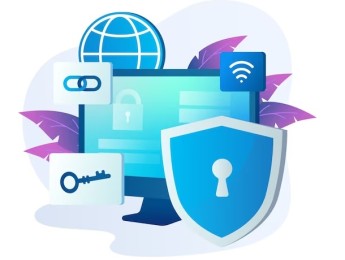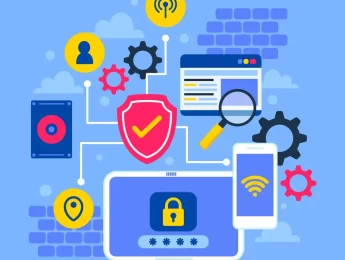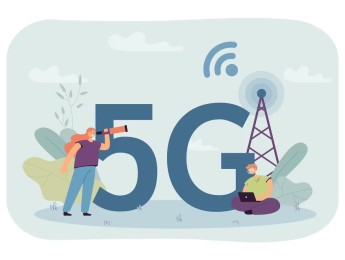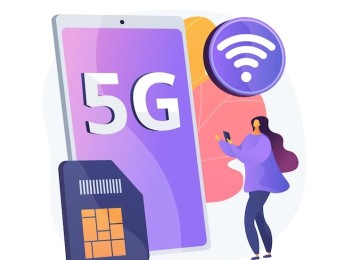Almost everywhere you go now, a wireless network forms part of your daily life, connecting you to various applications and hardware. We use wireless networking in enterprises, homes, and the street; it is a connected world. As a user, you wouldn't give much thought to the technology behind it, but as someone working with wireless networks, it is essential to know exactly how things work.
In technical terms, you are looking at an OSI model, and the action is a physical later. Networks come in all guises, from WLANs to mobile phone networks, satellite networks and terrestrial microwave networks. The underpinning technology is growing and evolving so fast that it can be easy to get left behind, so this course is intended for those who need to keep on top of everything happening. Delegates will get a solid grounding in all aspects of wireless technologies and even look at further changes that are coming in the future. It explores trends, uses, and applications as we deploy the next-generation tech. Of course, we must consider security, capacity, interoperability, and performance. Finally, we will look at the architecture and building blocks as they apply to the spectrum of future systems.
Upon completion of this course, participants will be able to:
- Gain a complete understanding of LAN/PAN/BAN wireless
- Explain the differences between each technology
- To be confident in understanding 802.15.1, 802.15.4 and 802.15.6
- Differentiate between 802.15.1, 802.15.4 and 802.15.6
- Explain 802.11
- Be confident in explaining Bluetooth, Zigbee and RFID
- Practice modulation and coding with 802.11
- Learn to be clear on the configuration and scenarios of 802.11
- Explain the future requirements for 802.11
This course is suitable for:
- IT Professionals
- IT System Managers
- Consultants
- Network Professionals
- Communication specialists
- System Testers
- Software and System Engineers
- Strategic and Technical Managers
- Supervisors
- Commissioning staff
- Electrical and C&I Engineers
- Maintenance staff
- Graduates
- Those looking to upskill for a career in networking
Teaching takes place in various settings, including face to face in a classroom environment, and will ensure that participants can expand their knowledge of the subject and increase their skill set. The course is delivered via various methods by a specialist tutor. This will include PowerPoint presentations, reviewing articles and other relevant materials, group or individual exercises and discussions. There may be some independent work set, and the course will require submitting articles to demonstrate understanding and an end-of-course test. Note-taking is encouraged, and you are welcome to use electronic devices to do this.
The course manual will form part of the learning but will give you references for the future. You are encouraged to ask questions and, if needed, spend time one-on-one with your tutor to review any issues. You can network with peers in similar roles during your time in the classroom.
Day 5 of each course is reserved for a Q&A session, which may occur off-site. For 10-day courses, this also applies to day 10
- An introduction to the application of fixed and wireless trends
- A look at the current technologies
- Delve into future technologies
- What is the next generation of wireless technology?
- What is IEEE 802.11 and its protocols?
- 802.11an/ac
- 802.11k/r/w/z/v/u/s/p/ad/ax/y/z
- 802.11ax
- 802.11 technologies, frequencies, channels and bands
- Modulation, power-saving initiatives and function blocks
- Bluetooth, GPS, REVmc and Location
- Location and models: practical considerations,
- What are neural networks
- Understanding the basics of 802.11ay
- The fundamentals of license-exempt operation?
- The security, formatting and channelisation of EDMG
- What is 802.11ah
- Understanding the radio frequency principles for different bands
- How did we evolve from 3G to 5G?
- New radio access technology, the tight and loose interactions
- How does 5G and LTW exist in the same space
- A look at the future
- How does wireless and 5G fit with IoT?
- Driving forces: the influence of the technology
- What aspects need to be considered, including safety
- Implementing a 5G system - the considerations
- Aspects of a 5G system
- A look at the legal requirements for 5G installation
- Transmission considerations
Upon successful completion of this training course, delegates will be awarded a Holistique Training Certificate of Completion. For those who attend and complete the online training course, a Holistique Training e-Certificate will be provided.
Holistique Training Certificates are accredited by the British Assessment Council (BAC) and The CPD Certification Service (CPD), and are certified under ISO 9001, ISO 21001, and ISO 29993 standards.
CPD credits for this course are granted by our Certificates and will be reflected on the Holistique Training Certificate of Completion. In accordance with the standards of The CPD Certification Service, one CPD credit is awarded per hour of course attendance. A maximum of 50 CPD credits can be claimed for any single course we currently offer.
- Course Code PI1-102
- Course Format Classroom, Online,
- Duration 5 days














